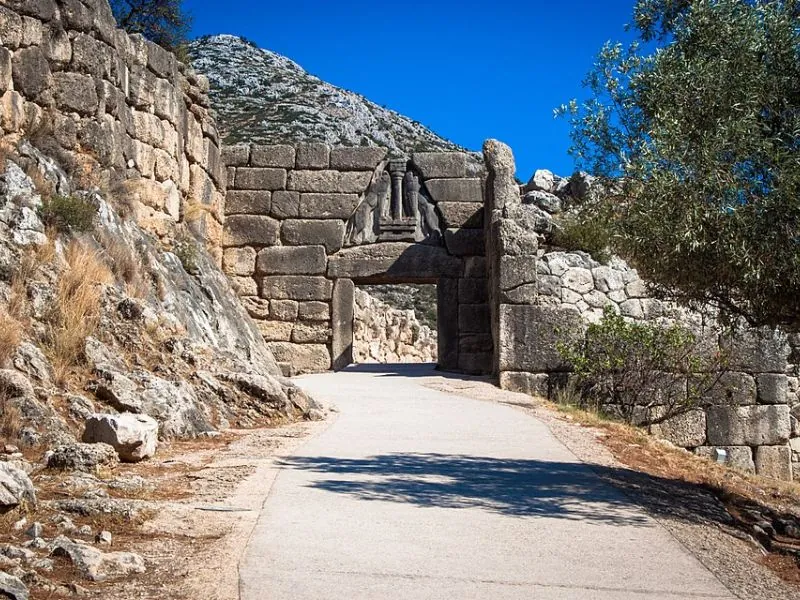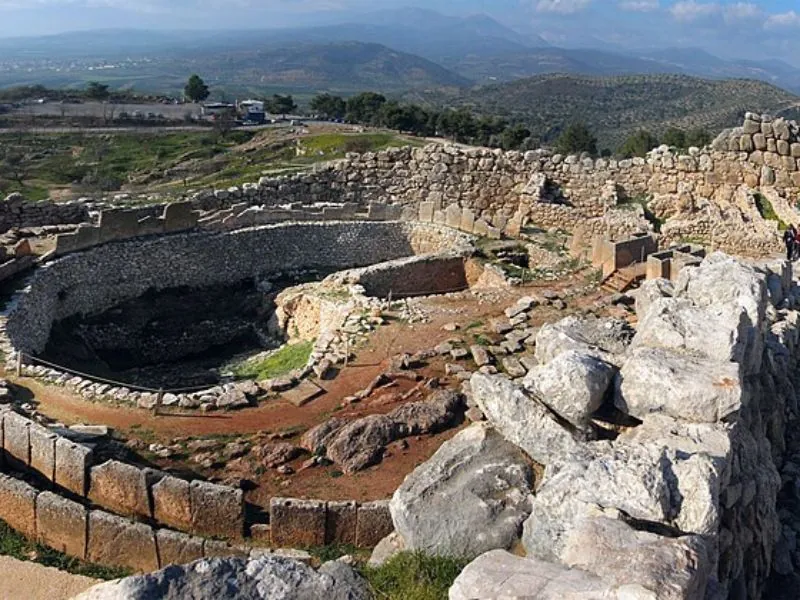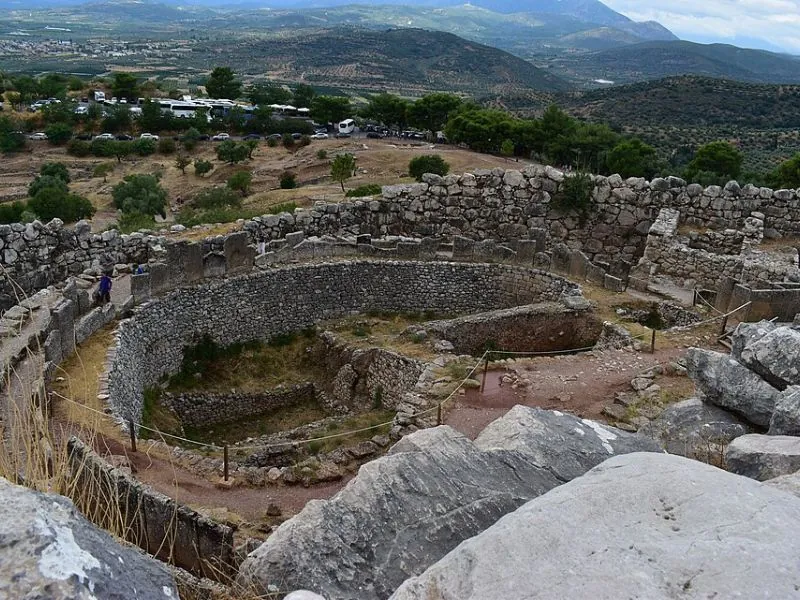
Just inside the south-west curtain wall, the House of Shields in Mycenae blended luxury craftsmanship with hard-edged military prestige. Here, palace-controlled artisans cut imported elephant tusk into gleaming panels that once adorned figure-of-eight shields and chariot rails.
Charred ivory curls, loom-weights and a handful of Linear B tablets reveal a bustling workshop where exotic trade goods, textile production and warrior imagery converged to advertise power.

Greek archaeologist George Mylonas cleared the complex in the 1950s. He exposed a two-room ground floor (18 × 9 m) built against the Cyclopean wall:
A rubble drain runs beneath both rooms, proof that the House of Shields in Mycenae handled water-soaked tusk and messy dye processes on a daily basis.
Ivory reached Mycenae via Levantine and Egyptian traders; Linear B uses e-re-pa-te (“elephant”) to record incoming shipments. Craftsmen softened tusk slabs in hot water, then:
Any offcuts went into decorative appliqués for sword pommels or furniture—nothing wasted.

Mycenaean warriors prized tall figure-of-eight shields of ox-hide stretched on a wooden frame. The House of Shields in Mycenae upgraded that leather canvas with ivory veneer. Surviving fragments show:
Displaying such shields on hall walls or chariot rails telegraphed rank; to carry one in battle was to wear a walking billboard of wealth.
Tablet Ta 641 (found elsewhere in the citadel but matching the workshop’s context) records: “5 ivory panels for shields, to the armorer Jo-ka-me-no.”
Another, Vn 535, lists rations for te-ke (master carver) and four apprentices, paid three measures barley each—wages overseen by granary scribes. Palace control of ivory supply underscores how closely the wanax linked prestige goods to centralized power.
A cache of loom-weights and spindle whorls in Room A shows that weaving ran parallel to shield work. Purple murex-dye stains on plaster suggest cloth finishing alongside ivory polishing—practical, since oil-rich rinse water from wool washing also lubricated saws and sanding pads, integrating two luxury sectors under one roof.

A destruction layer dated to ca. 1190 BCE (identical to palace burn marks) seals the workshop:
The blaze also carbonised wooden uprights, leaving dark stains that still outline shield racks on walls and floor.
Master carver (te-ke) directed ivory allocation, while apprentices trimmed blanks. A House of Shields in Mycenae day likely ran:
Wages in grain came every ten days; occasional allocations of perfumed oil (from the nearby Oil Merchant House) rewarded high output.
The House of Shields in Mycenae shows that military prestige wasn’t forged only in bronze; it was carved in ivory, scented with imported dyes and audited on clay tablets.
By marrying exotic trade, meticulous craftsmanship and palace bookkeeping, this workshop turned raw tusk into political theatre—shields that shone as brilliantly in audience halls as they did on the battlefield.
Stand amid the charred chips and imagine the rhythmic scrape of burins: you’re hearing Mycenae’s economy and ideology converge in one bone-white masterpiece.